California hosts a rich tapestry of avian diversity, and the count reaches an impressive 16 distinct species for owls.
From the iconic Great Horned Owl to the elusive Northern Pygmy Owl, each species brings a unique charm to the state’s varied landscapes.
This collection of nocturnal hunters spans a spectrum of sizes, habitats, and hunting techniques, creating a captivating narrative of adaptation and survival.
Join us on a journey through the diverse avian world of California’s owls as we delve into their habitats, behaviors, and conservation efforts crucial for ensuring their continued presence in this dynamic ecosystem.
Explore the mysteries of the night through the lens of these remarkable birds, each with its own story etched into the vast Californian wilderness. Stay focused.
16 Owls in California
Explore the fascinating world of California’s owls, each with unique characteristics and ecological significance.
Discover the diverse species thriving in this region, from the elusive Flammulated Owl to the mighty Great Horned Owl.
Dive into their lifestyles, habitats, and the conservation efforts crucial for preserving these majestic birds of the night.
1. Spotted Owl
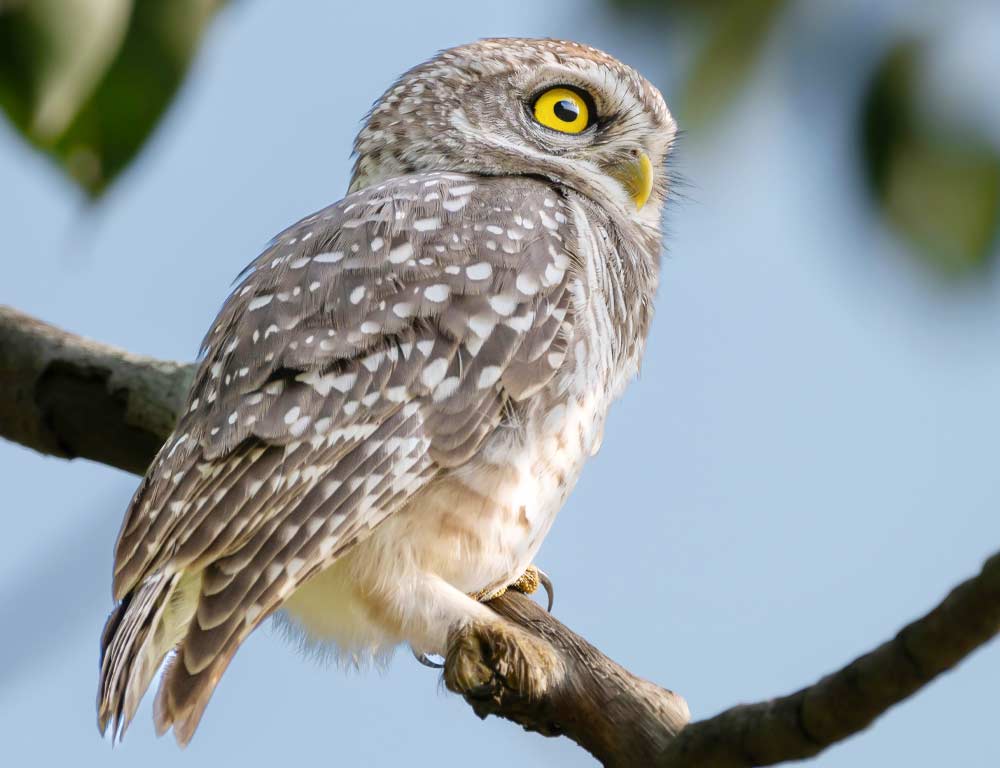
- Scientific Name: Strix occidentalis
- Population: Declining
- Life Span: Up to 10-15 years
- Size: 16-19 inches
- Weight: 1-1.6 pounds
- Food: Mainly rodents, occasionally birds
- Wingspan: 38-48 inches
- Status: Threatened
The Spotted Owl, native to old-growth forests in California, faces threats due to habitat loss and competition with other owl species.
These nocturnal birds are known for their distinctively spotted plumage and preference for mature forests.
Spotted Owls have a solitary lifestyle and tend to mate for life. They are highly territorial and communicate through hoots, screams, and clucking sounds.
Preying primarily on rodents, their survival is closely tied to the health of the forest ecosystems they inhabit. Conservation efforts focus on preserving their dwindling habitats and managing forest landscapes sustainably.
2. Barn Owl

- Scientific Name: Tyto alba
- Population: Stable
- Life Span: Up to 10 years
- Size: 12-16 inches
- Weight: 12-25 ounces
- Food: Mainly rodents, occasionally birds
- Wingspan: 42-43 inches
- Status: Not listed
The Barn Owl, with its heart-shaped facial disc, is an adaptable species in various habitats, from farmlands to urban areas. Known for its silent flight and keen hunting skills, the Barn Owl is a voracious predator of rodents.
These nocturnal birds exhibit solitary behavior but may form monogamous pairs during breeding.
Conservation efforts often involve providing nesting sites in human-made structures and minimizing the use of rodenticides.
3. Great Horned Owl
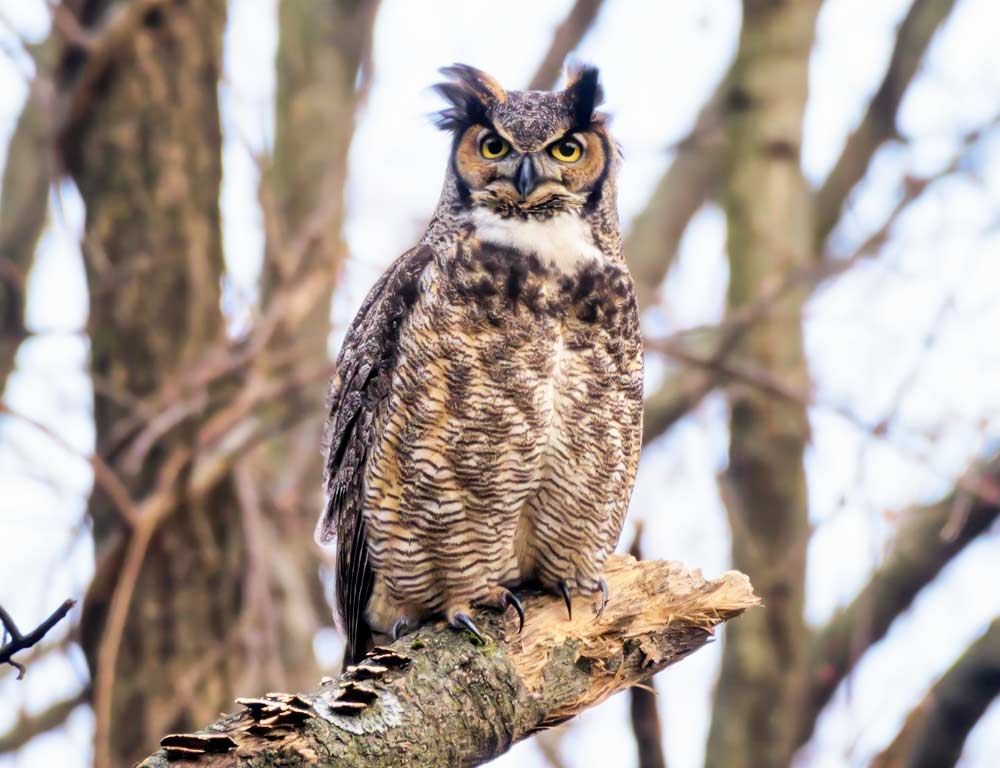
- Scientific Name: Bubo virginianus
- Population: Stable
- Life Span: Up to 20 years
- Size: 18-25 inches
- Weight: 2-5.5 pounds
- Food: Diverse diet, includes mammals, birds, and reptiles
- Wingspan: 40-60 inches
- Status: Not listed
The Great Horned Owl is a highly adaptable and widely distributed species in California. With distinctive ear tufts and large yellow eyes, these mighty hunters can thrive in various ecosystems.
Great Horned Owls are known for their versatile diet, which includes mammals as large as skunks and birds as small as sparrows. They are territorial and often establish nests in abandoned hawk or crow nests.
Their adaptability and predatory prowess contribute to their stable population across diverse environments. Conservation efforts focus on preserving habitats and minimizing potential threats, such as habitat destruction and pesticide use.
4. Barred Owl
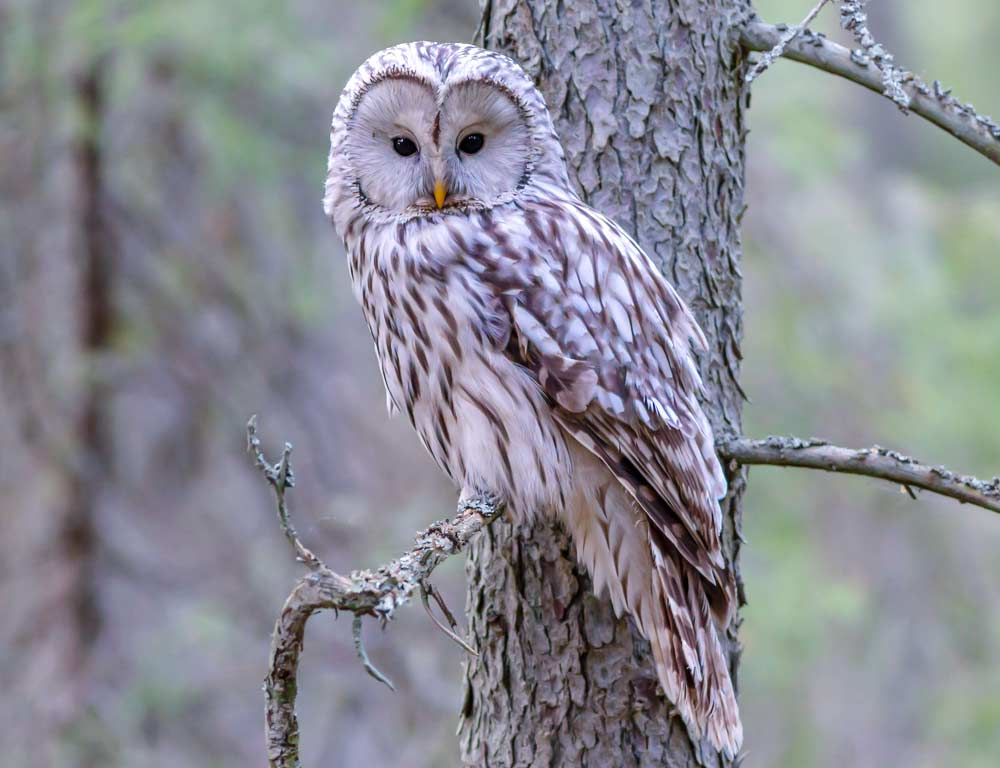
- Scientific Name: Strix varia
- Population: Increasing in some areas
- Life Span: Up to 10 years
- Size: 16-24 inches
- Weight: 1-2.5 pounds
- Food: Small mammals, birds, amphibians
- Wingspan: 38-49 inches
- Status: Not listed
The Barred Owl, characterized by its barred plumage and large, dark eyes, is native to eastern North America but has expanded its range into parts of California.
These adaptable birds thrive in various habitats, from dense forests to suburban areas. They are known for their distinct hooting calls, often heard at night. Barred Owls are opportunistic hunters, preying on small mammals and birds.
Their increasing presence in some regions has led to competition with other owl species, particularly the Spotted Owl.
Conservation efforts aim to monitor and manage their expanding populations while minimizing potential impacts on native species.
5. Burrowing Owl
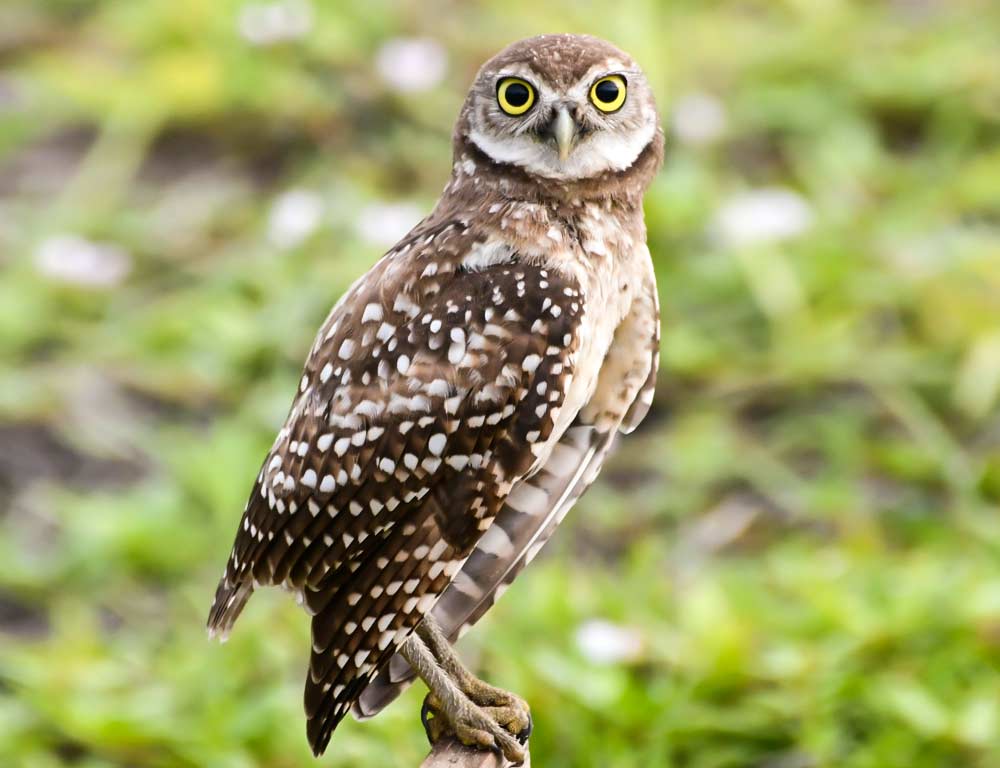
- Scientific Name: Athene cunicularia
- Population: Declining
- Life Span: 6-8 years
- Size: 7-11 inches
- Weight: 5-8 ounces
- Food: Insects, small mammals, birds
- Wingspan: 21-24 inches
- Status: Endangered in some regions
The Burrowing Owl is a small, ground-dwelling owl often found in open grasslands and prairies. Named for their habit of nesting in burrows, they may also use artificial structures like pipes or abandoned mammal burrows.
These diurnal owls are active daily and hunt various prey, including insects and small mammals. Burrowing Owls face threats from habitat loss due to urbanization and agriculture.
Conservation efforts involve protecting and creating suitable nesting sites, managing grassland habitats, and addressing other factors contributing to their decline.
6. Snowy Owl
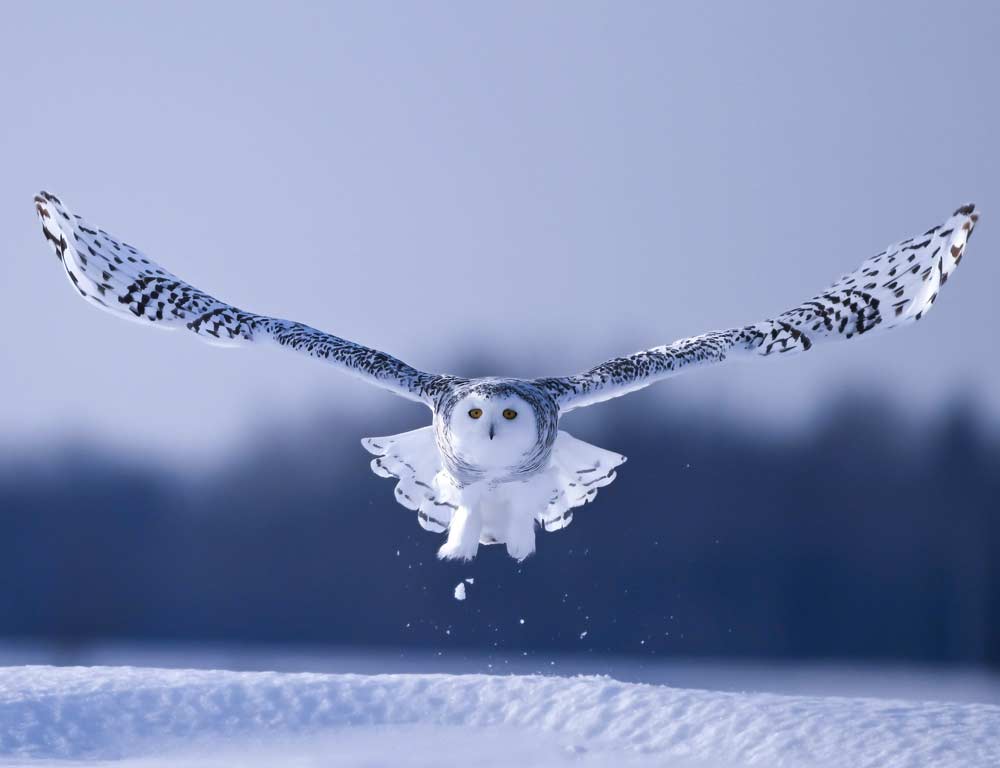
- Scientific Name: Bubo scandiacus
- Population: Variable, with cyclical irruptions
- Life Span: Up to 9 years
- Size: 20-27 inches
- Weight: 3-6.5 pounds
- Food: Mainly lemmings, also birds and mammals
- Wingspan: 49-59 inches
- Status: Not listed, but vulnerable in some regions
The Snowy Owl, famous for its striking white plumage, is an Arctic bird that occasionally migrates southward, reaching parts of California during irruption.
These owls are well-adapted to cold environments and have thick plumage to withstand harsh temperatures.
Snowy Owls primarily feed on lemmings in their Arctic breeding grounds but may switch to other prey, such as birds and mammals, during migrations.
Conservation efforts focus on monitoring their movements, understanding the factors influencing irruptions, and addressing potential threats during their temporary presence in southern regions.
7. Great Grey Owl
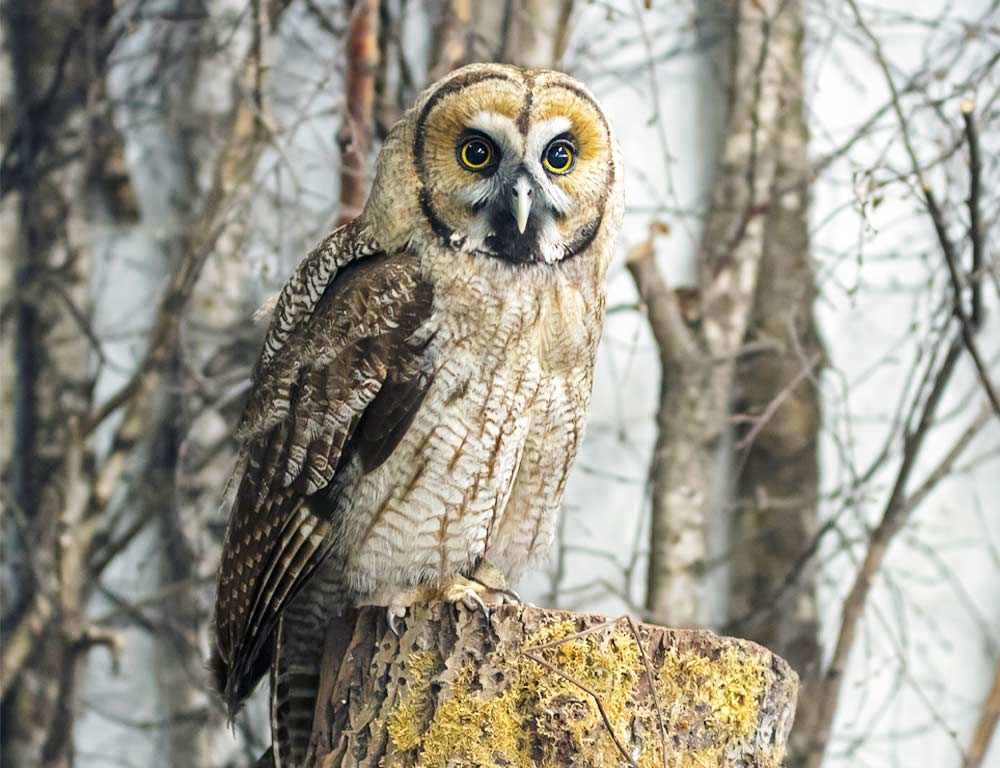
- Scientific Name: Strix nebulosa
- Population: Varies, but generally stable
- Life Span: Up to 10 years
- Size: 24-33 inches
- Weight: 1.5-5 pounds
- Food: Small mammals, birds
- Wingspan: 54-60 inches
- Status: Not listed
The Great Grey Owl is the most giant owl by length, known for its striking facial disk and dense, grey plumage. Native to North America, including parts of California, they inhabit coniferous forests.
These owls are nocturnal hunters, relying on their keen hearing to locate prey like rodents and birds.
Their significant facial disks function like satellite dishes, directing sound toward their ears. Great Grey Owls are generally solitary, establishing territories in their preferred habitats.
Conservation efforts often involve monitoring their populations, protecting nesting sites, and preserving old-growth forest ecosystems where they thrive.
8. Northern Saw-whet Owl

- Scientific Name: Aegolius acadicus
- Population: Stable
- Life Span: 3-7 years
- Size: 7-8 inches
- Weight: 2-5 ounces
- Food: Insects, small mammals, birds
- Wingspan: 16-18 inches
- Status: Not listed
The Northern Saw-whet Owl is a small, secretive owl with a distinctive whistled call. Found in various habitats, including forests and wooded areas in California, these nocturnal hunters primarily feed on small mammals, insects, and birds.
Despite their small size, they are skilled hunters with excellent night vision and hearing. They often use abandoned woodpecker holes or natural tree cavities for nesting.
Conservation efforts focus on monitoring their populations, protecting suitable nesting sites, and understanding their migration patterns.
9. Northern Spotted Owl
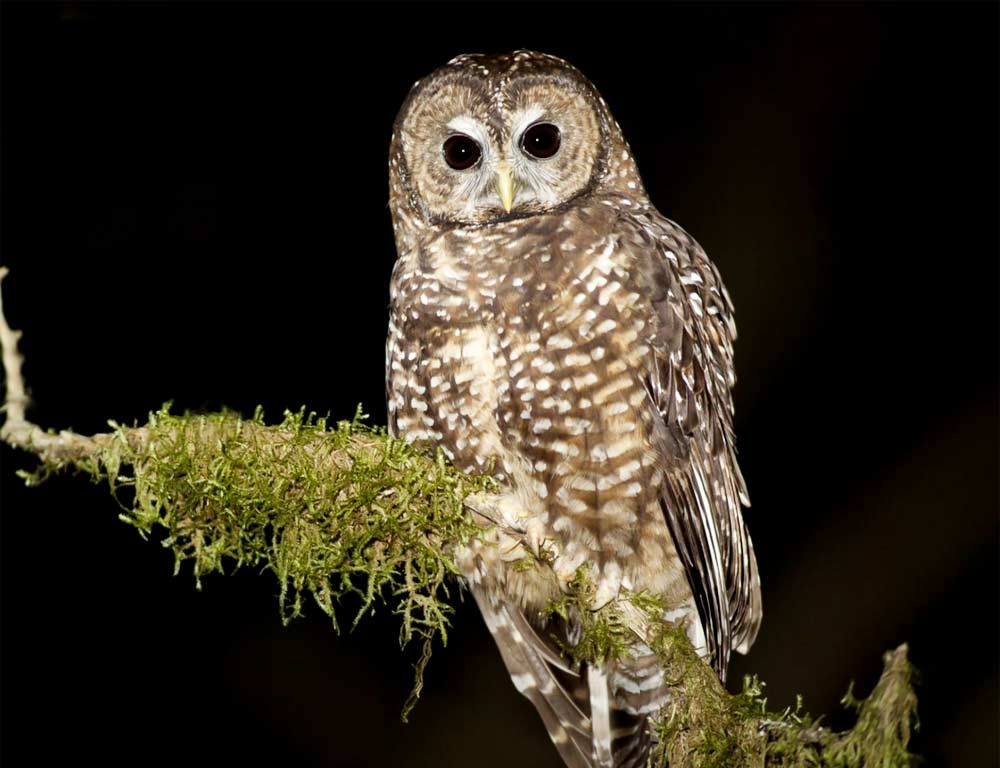
- Scientific Name: Strix occidentalis caurina
- Population: Declining
- Life Span: Up to 15 years
- Size: 18-19 inches
- Weight: 1.1-2.2 pounds
- Food: Mainly small mammals, birds
- Wingspan: 40-50 inches
- Status: Threatened
The Northern Spotted Owl is a subspecies of the Spotted Owl native to the old-growth forests of the Pacific Northwest, including parts of California.
Their spotted plumage helps them blend into their forested surroundings. Facing threats from habitat loss, logging, and competition with other owl species, they are considered a threatened species.
Like their relatives, they are nocturnal and feed on small mammals and birds. Conservation efforts are critical to preserving their habitats and addressing the complex challenges they face, such as the impact of logging on their preferred old-growth forest habitats.
10. Long-eared Owl

- Scientific Name: Asio otus
- Population: Stable
- Life Span: Up to 10 years
- Size: 13-16 inches
- Weight: 7-16 ounces
- Food: Small mammals, birds
- Wingspan: 35-39 inches
- Status: Not listed
The Long-eared Owl is characterized by its long “ear” tufts, which are feather extensions, not ears. These owls are found in various habitats, including woodlands and open areas, mainly nocturnal hunters.
Their diet consists of small mammals and birds. Long-eared Owls are often elusive and roost in dense vegetation or coniferous trees during the day.
They are known for their cryptic plumage, which helps them blend into their surroundings. Conservation efforts focus on protecting their habitats, including old-growth forests, and minimizing disturbances during the breeding season.
11. Short-eared Owl
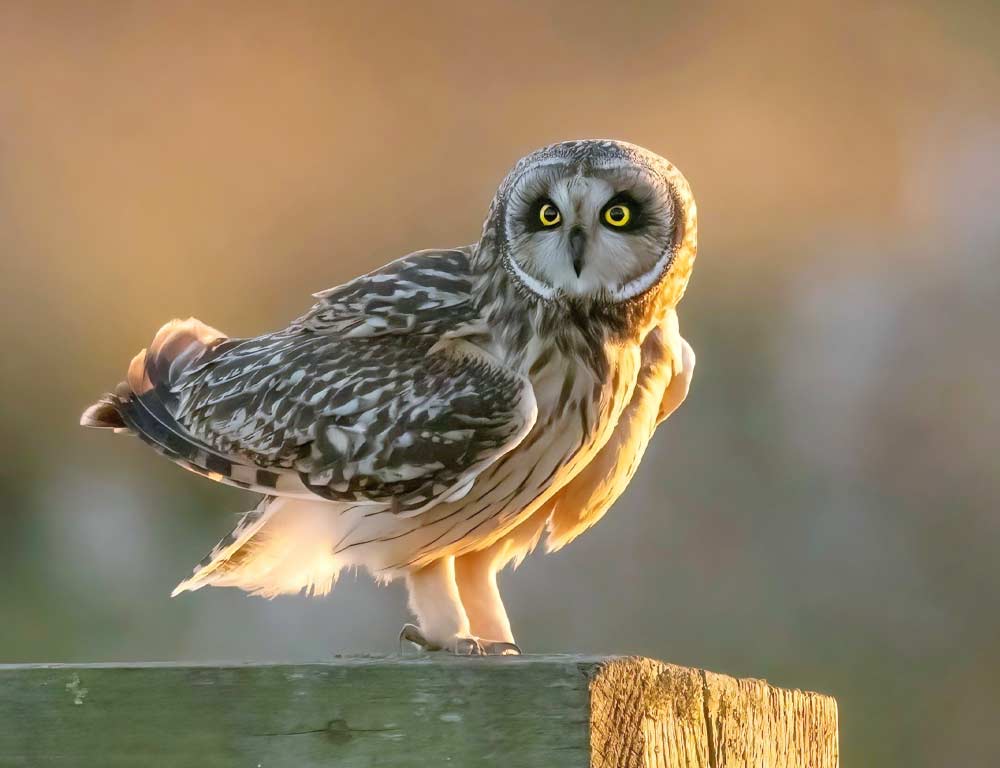
- Scientific Name: Asio flammeus
- Population: Declining
- Life Span: Up to 10 years
- Size: 13-17 inches
- Weight: 7-16 ounces
- Food: Small mammals, birds
- Wingspan: 33-43 inches
- Status: Not listed, but declining in some regions
The Short-eared Owl is a medium-sized owl with distinctive facial disks and short “ear” tufts. They are adapted to open habitats like grasslands, marshes, and tundra.
Short-eared Owls are diurnal, hunting during daylight hours, and are known for their moth-like flight patterns. Their diet consists mainly of small mammals and birds.
These owls may nest on the ground, and their populations face threats from habitat loss due to agriculture and urban development. Conservation efforts involve preserving suitable habitats, such as grasslands, and addressing the factors contributing to their decline.
12. Elf Owl
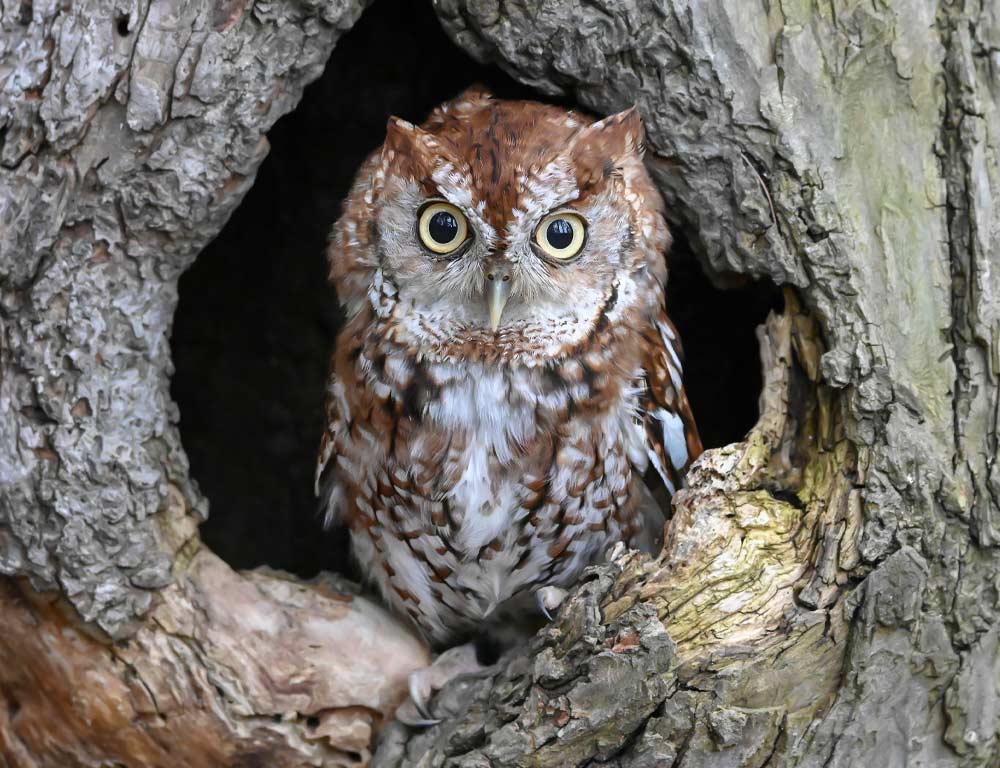
- Scientific Name: Micrathene whitneyi
- Population: Stable
- Life Span: 3-6 years
- Size: 5-6 inches
- Weight: 1.5-2.5 ounces
- Food: Insects, small birds, and rodents
- Wingspan: 9-10 inches
- Status: Not listed
The Elf Owl holds the title of the world’s smallest owl. Native to the southwestern United States, including parts of California, these tiny owls inhabit desert regions with saguaro cacti.
Primarily nocturnal, Elf Owls feed on insects, small birds, and rodents. They are cavity nesters, often utilizing woodpecker holes or natural tree cavities. Despite their small size, Elf Owls are efficient hunters.
Conservation efforts for these owls involve preserving their desert habitats, ensuring the availability of nesting sites, and monitoring their populations in the face of potential threats such as habitat alteration and climate change.
13. Flammulated Owl
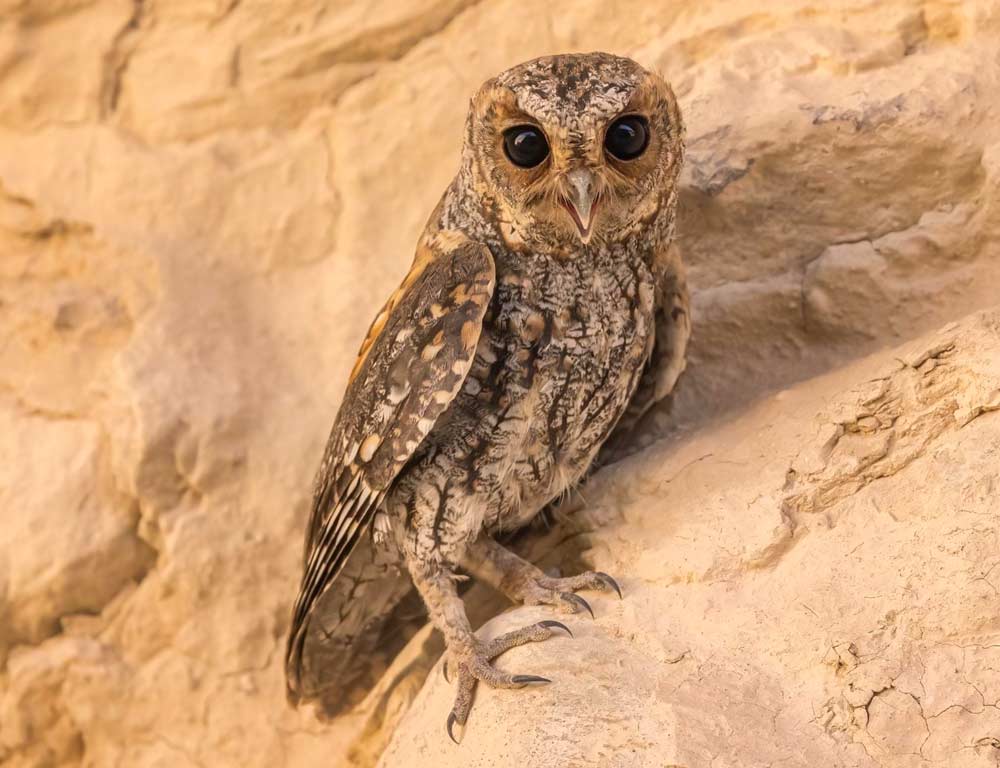
- Scientific Name: Psiloscops flammeolus
- Population: Stable, but exact numbers are challenging to determine
- Life Span: Up to 6 years
- Size: 6-7 inches
- Weight: 1.5-2.5 ounces
- Food: Insects
- Wingspan: 16-18 inches
- Status: Not listed
The Flammulated Owl is a small owl species with a reddish-brown facial disc and a distinctively petite size. These nocturnal owls are found in western North America, including parts of California.
Their diet primarily consists of insects, especially moths and beetles. Flammulated Owls are known for their high-pitched hooting calls. Due to their small size and secretive nature, studying their populations is challenging.
Conservation efforts involve monitoring their habitats, often mature coniferous forests, and considering the impacts of forest management practices on these diminutive owls.
14. Northern Pygmy Owl
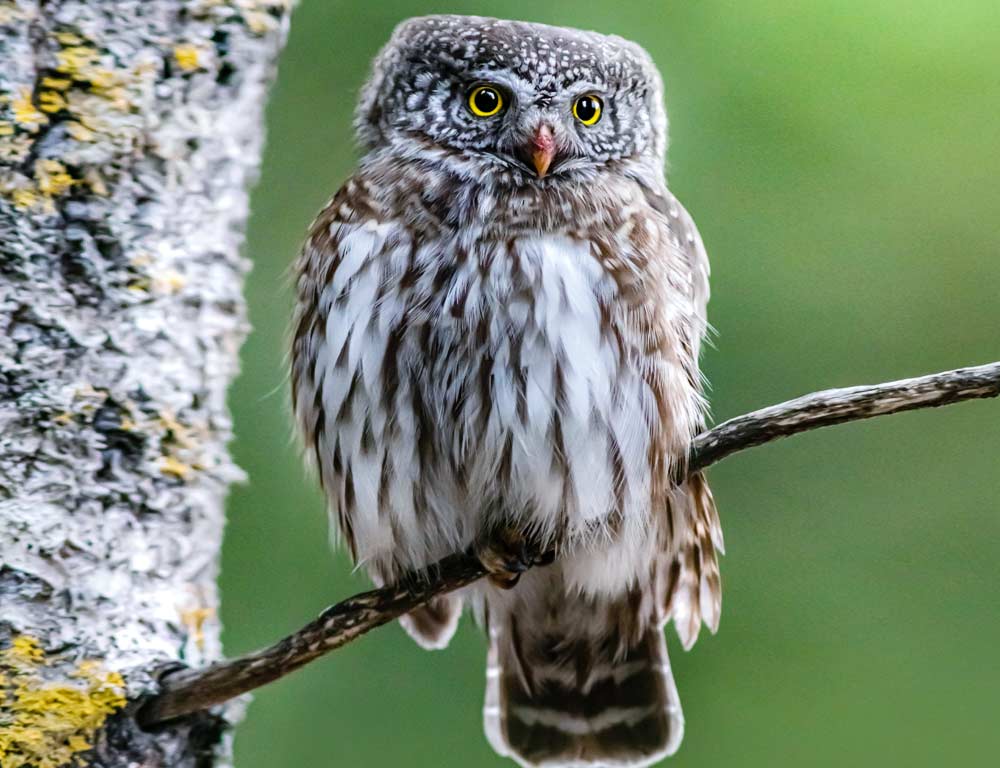
- Scientific Name: Glaucidium californicum
- Population: Stable
- Life Span: 7-10 years
- Size: 6-7 inches
- Weight: 2-3 ounces
- Food: Small birds, mammals, insects
- Wingspan: 10-14 inches
- Status: Not listed
The Northern Pygmy Owl is a small diurnal owl found in North America, including California. Recognizable by its large head and lack of ear tufts, these owls are efficient hunters.
Despite their small size, they prey on birds and mammals larger than themselves. Northern Pygmy Owls often use tree cavities for nesting and may defend their territories vigorously.
Conservation efforts for these owls focus on maintaining suitable forested habitats and addressing potential threats, such as habitat fragmentation and urbanization.
15. Tyto (Barn Owl)
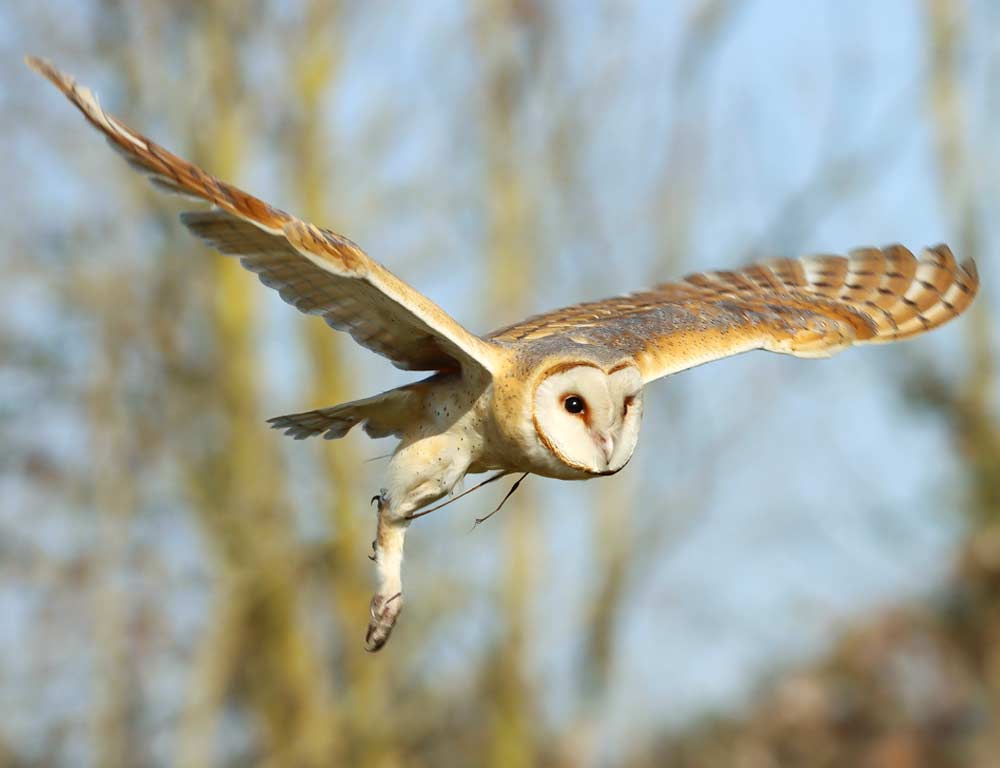
- Scientific Name: Tyto
- Population: Worldwide distribution, population varies by region
- Life Span: 2-4 years
- Size: 12-16 inches
- Weight: 12-25 ounces
- Food: Small mammals, birds
- Wingspan: 42-43 inches
- Status: Not listed
The term “Tyto” refers to the Barn Owl genus. Barn Owls are found worldwide and are known for their distinctive heart-shaped facial discs.
These nocturnal hunters have excellent low-light vision and keen hearing, allowing them to locate prey in complete darkness. Barn Owls feed primarily on small mammals and birds.
They often roost in barns, attics, or other human-made structures. Conservation efforts for Barn Owls include providing suitable nesting sites, minimizing the use of rodenticides, and raising awareness about the benefits of these owls in controlling agricultural pests.
16. True Owl (Strigidae)
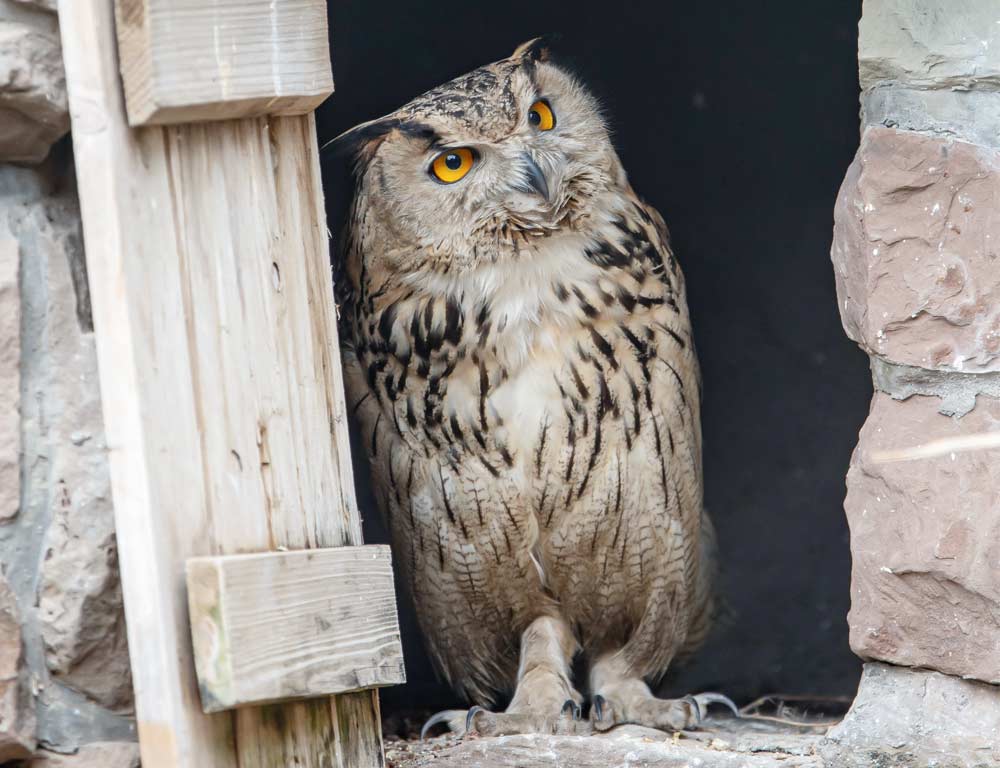
- Scientific Name: Strigidae (Family)
- Population: Diverse species, populations vary
- Life Span: Varies by species
- Size: Varies by species
- Weight: Varies by species
- Food: Diverse diet, includes mammals, birds, insects
- Wingspan: Varies by species
- Status: Not listed
The term “True Owl” refers to the family Strigidae, which includes most owl species. True Owls are found worldwide and vary greatly in size, habitat preference, and behavior.
They are characterized by their forward-facing eyes, powerful talons, and a diverse diet that often includes mammals, birds, and insects. True Owls exhibit various hunting strategies, from perching and waiting to active hunting.
Conservation efforts for True Owls involve protecting their habitats, managing forests sustainably, and addressing specific threats faced by individual species within the family Strigidae.
Wrapping Up
California’s owls enrich our ecosystems with diversity and ecological balance. From the mysterious Flammulated Owl to the iconic Great Horned Owl, their unique traits and habitats showcase nature’s intricacies.
Conservation efforts are imperative to ensure the survival of these remarkable birds and maintain the ecological harmony they contribute to.
As guardians of the night, these owls captivate our imagination and remind us of the delicate balance within California’s varied landscapes. Thank you so much.